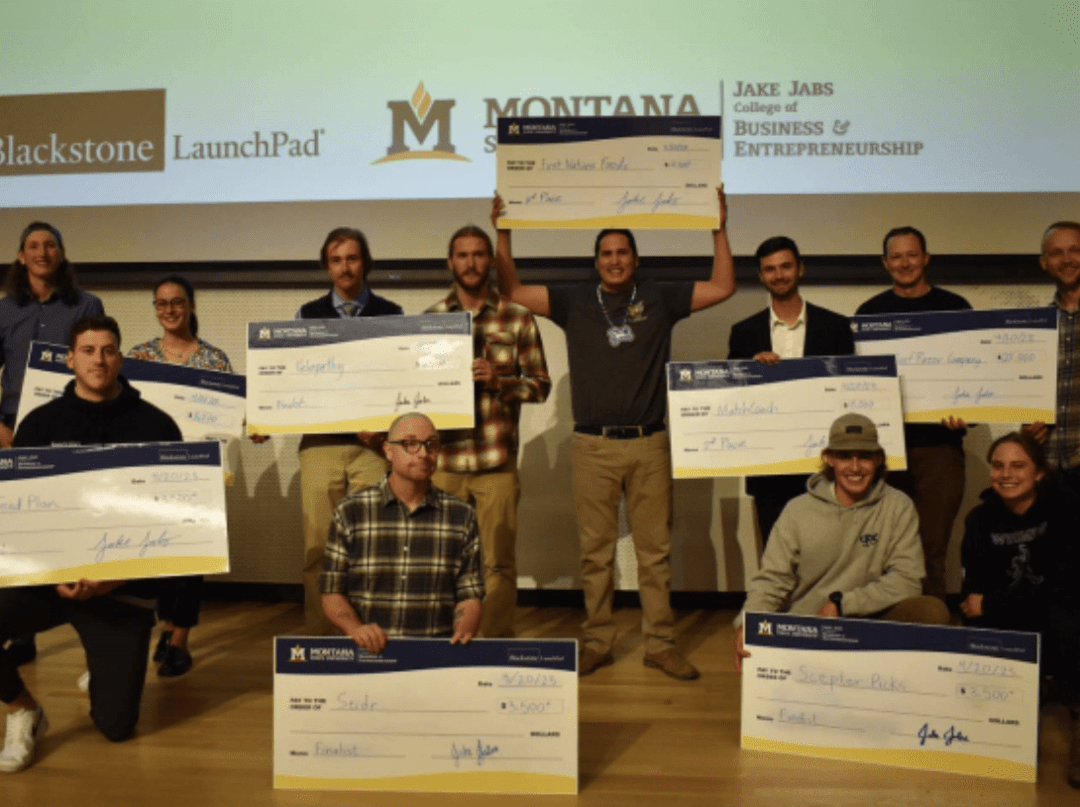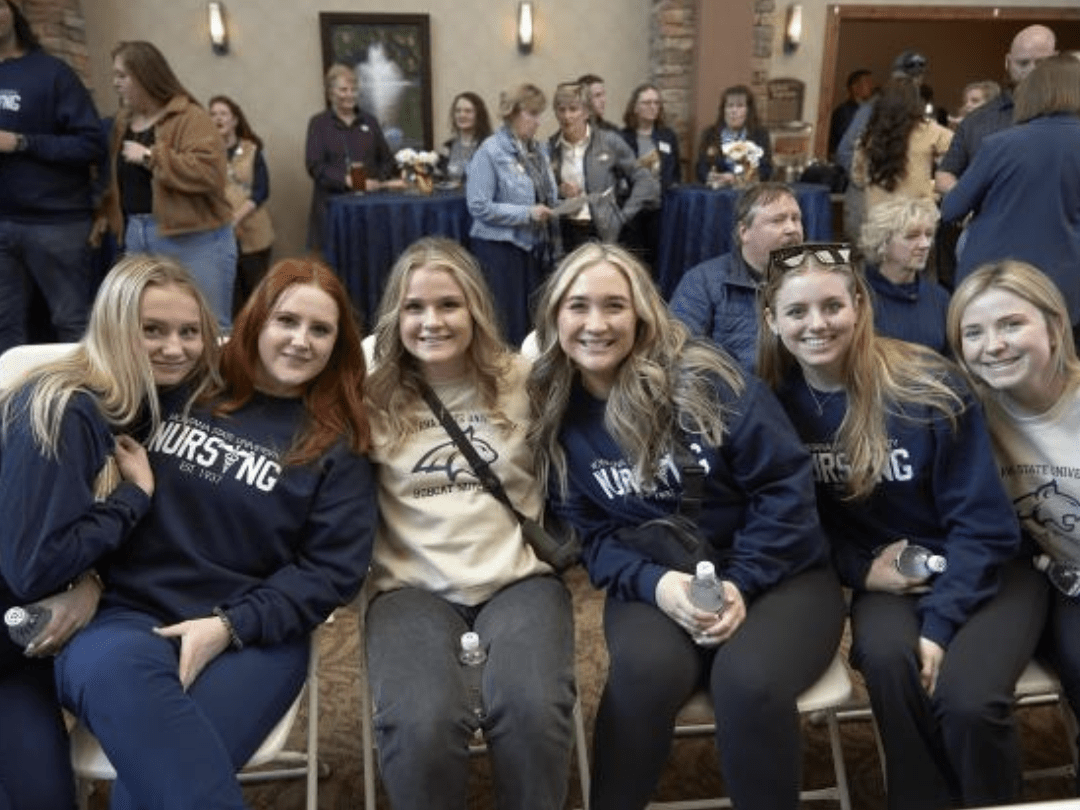Montana State Sustainability Summit speaker stresses power of acting locally
 Montana State University Plant Growth Center manager David Baumbauer hosts a tour of the facility, pictured in the background, during the third annual Sustainability Summit on Tuesday, March 26, 2024, in Bozeman, Montana. The event highlights elements of sustainable campus infrastructure, such as new energy-efficient lighting in the Plant Growth Center. MSU photo by Colter Peterson
Montana State University Plant Growth Center manager David Baumbauer hosts a tour of the facility, pictured in the background, during the third annual Sustainability Summit on Tuesday, March 26, 2024, in Bozeman, Montana. The event highlights elements of sustainable campus infrastructure, such as new energy-efficient lighting in the Plant Growth Center. MSU photo by Colter Peterson
BOZEMAN – The keynote speaker at Montana State University’s 2024 Sustainability Summit on Tuesday urged students to make choices with the knowledge that, while their individual power may be limited, their collective actions over time can affect everything on Earth.
Hunkpapa Lakota backcountry freestyle skier and activist Connor Ryan delivered that message during the annual summit hosted by MSU’s Office of Sustainability. The summit showcases campus-wide research, highlights efforts to make the university’s operations more sustainable, and updates the campus community on progress toward MSU’s long-term carbon-neutrality and zero-waste goals.
During his lunchtime speech, Ryan stressed that the actions of individuals in their own communities will contribute to significant, wide-reaching change in the long run, even if those actions don’t seem tremendously powerful in the short-term.
“The power of a wave isn’t in the mist that precedes it but in the power of the big wave that comes behind it,” he said.
The keynote address drew a crowd to MSU’s Strand Union Building, where posters displayed informational charts and architectural renderings of current and planned campus buildings and their energy-efficient design elements. Other highlights from the summit included sustainability-focused tours of MSU’s utility, research and landscape infrastructure; workshops on teaching sustainability; and presentations on related research being conducted by MSU students.
In his keynote address, Ryan offered his perspective as an athlete who views backcountry skiing in the Rockies as more than just a sport. For him, he said, it’s a dance, a prayer and a way to ceremonially reconnect with his Indigenous heritage and the places he came from. That connection is a major theme of the award-winning documentary film he co-directed, “Spirit of the Peaks,” which features his work and athleticism and which was shown on campus Monday evening to kick off the summit.
Ryan said that though he grew up on Colorado’s Rocky Mountain Front, it wasn’t until his adulthood, when he began exploring his heritage, that he began to understand his connection to the natural world. That understanding dawned during a sweat lodge ceremony, he said. After collecting creek water for the ceremony within view of the mountains where he skis, he was told that the water, in the form of steam, would become part of his body when he inhaled it, just as water from snow would become his blood after melting in the spring.
“I had the realization that this water I was carrying into the lodge was the water I’d been skiing on,” he said. “It was the first time I realized I was connected to this snowpack.”
Ryan told his audience that an Indigenous understanding of the interconnectedness of all things in nature is useful in informing environmental choices.
“Nothing in nature lives for itself,” said Ryan. “It’s up to us not to always do what’s profitable or what will bring us pride or glory or success, but instead for us to reapply those rules to everything that grew beside us on this planet.”
Ryan said actions taken at the grassroots level are more powerful than people realize, and he urged students to find ways they can work for sustainability while maintaining faith that those efforts matter.
“We as human beings can never leave nature – we are nature,” he said. “Everywhere we are is because of a decision made before us. If we want things to be different, we have to make different decisions.”






News Comments
This is so typical of a sign in, which we should not have to do to check if we or some one in our party got a permit. I have been working or "creating an account" for 30 minutes and just get the same ...
Smith River permit drawing results available
Sunday, Mar. 10, 2024
I have struggled with this podcast and my own participation therein, the event itself obviously traumatic, but beyond that my inability to reach anyone and convey anything resembling truth. The person ...
Billings, MT Case Becomes True Crime Podcast | 'An Absurd Result'
Marktokarski
Saturday, Jan. 20, 2024
Why not leave those cheerful, colorful garlands up longer? What’s the rush?
Main Street Closed Jan 2
Saturday, Dec. 30, 2023
You do not have the authority to determine what may or may not be sensitive lands! This is an example of extreme overreach on your part.
City of Bozeman, Gallatin County Adopt Sensitive Lands Protection Plan
Friday, Dec. 22, 2023